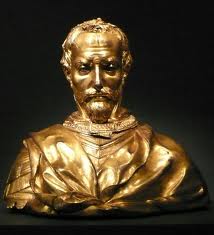Now, we have two films and one play devoted to the advent of the film industry. Why, I am still trying to figure out . Two of them seem to be something of an indulgence on the part of the director, Martin Scorsese’s, “Hugo”, and Michel Hazanavicius’s, “The Artist.” While Hugo certainly had it’s charming moments between the small boy who lived in the clock tower of the train station and the daughter of the boy’s nemesis, the small shop owner in the station, and it’s amusing side with the stationmaster played by Sacha Baron Cohen as an Inspector Cluzot type (Peter Sellers in the Pink Panther movies).
 |
| Sascha Baron Cohen w/ Asa Butterfield in "Hugo" |
“The Artist” had plot and characters derived from films of the past such as “Singing in the Rain” and Errol Flynn. I found it rather boring except, possibly, the exceptional performance by Uggie, the dog, who, for me, stole the show.
 |
| Jean Dujardin w/ Uggie in "The Artist" |
Obviously, I am part of a very small minority and will be thought of as a philistine. I would have kept my opinions to myself, but we recently had the opportunity of seeing a simulcast from the National Theater in London of Nicholas Wright’s “Traveling Light.”
For me, it did all that the two films wished to achieve but revealed far more about why films became successful. It has pathos, humor and characters I could relate to. I quickly forgot I was watching a video of a play and was transported to the theater where I felt I was sitting in the theatre with the British audience.
“Traveling Light” takes place in a Shtetl (Yiddish for a small town) in Poland in the early 20th century. It has a simple but engaging plot. From the beginning of the play an older gentleman in a suit appears as narrator telling the story of his youth. He had moved, as a young man, to London to get away from his parents and his village. Seven years later he returns, his father, a professional still photographer, has died and his son finds his moving picture camera. The local owner of the mill and the richest man in town convinces him to stay in the village and make films by funding him.
 |
| "Traveling Light" |
Sure that he can teach the naïve Americans how to make motion pictures the young man eventually moves to the U.S. and becomes one of the early Hollywood Moguls. In fact, many of them were Jewish and also came from Eastern Europe. What made them successful was not new technology but rather the tradition of Yiddish theater and the stories that they liked to tell. Those stories remained basically the same, translated into the new medium and even transformed, into “westerns”.
So why did this movie/play engage me so much more than the two films. The play had characters who were real people that one could relate to. They expressed honest emotions unlike the fantasy of “Hugo” or the staffage figures of “The Artist”. Together the three productions make a perfect triangle about the early film era.








